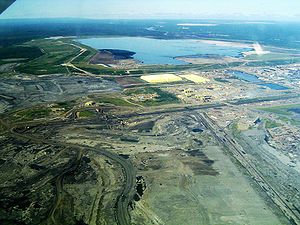Canada oil could be shipped to northern seaports after Keystone rejection
By BILL MANN
The latest possible route to get Alberta oil to overseas markets will have many scrambling for an atlas or Google Maps. Where pelts once travelled south, petroleum may soon travel north.
With the Keystone XL pipeline from Alberta to Texas now stalled by US President Barack Obama, and Enbridge's Northern gateway pipeline to the seaport of Kitimat, British Columbia, now mired in months of public hearings just begun, Canadian and US oil companies are taking a hard look at shipping the oil north.
 To do so, they would use a mighty inland river system navigable by large tankers and once used by the Hudson Bay Company to ship beaver pelts south to market.
To do so, they would use a mighty inland river system navigable by large tankers and once used by the Hudson Bay Company to ship beaver pelts south to market.
The Mackenzie, Slave and Athabasca Rivers could bring oil and pipeline equipment from the Arctic or Hudson Bay right into the heart of Alberta, where the oil sands are.
There's only one hitch - a series of four Slave River rapids up by the border of Alberta and the Northwest Territories.
That's where an existing 24-mile-long portage road at Fort Simpson, Alberta (current population: 8) could come into play. The US Army used it to truck oil north to a short-lived, expensive pipeline for a year near the end of World War II.
Tiny Fort Fitzgerald was once a bustling seaport, handling goods from the Hudson Bay Company, and it could boom again soon with Alberta's oil sands production slated to increase over the next three years to 3 million bpd from about 1.7 million.
Alberta needs to diversify its market for bitumen beyond the US Midwest, and using a trusty old fur-trading river system may be the best way, given the current political climate, to reach Asian markets.
Fur-trading routes, which once built western Canada, may soon help sustain it.
Those pesky rapids
Were it not for the 12 miles of rapids near remote Fort Fitzgerald, large ocean vessels could ascend the Mackenzie River, cross Great Slave Lake, continue up the Slave and Athabasca rivers to the geographical centre of Alberta - the town of Athabasca.
Oil, unlike water, can sometimes flow upward, towards markets - in this case, up a mighty river system that drains into the now-navigable Arctic and Hudson Bay.
Using the Slave River system and the portage near the port may also be the way for Imperial Oil to get its heavy drilling equipment now stranded in an Idaho port up to Fort McMurray, Alberta, the epicenter of the booming oilfields.
Local opposition in Montana has kept much of that huge, Asian-made equipment off two-lane surface roads leading up to Fort McMurray.
"Imperial continuously assesses a variety of transportation routes to serve its operations and opportunities in the oilsands," said Pius Rolheiser, Imperial's public and government affairs spokesman. "We assess the viability of transportation routes on the basis of safety, reliability and cost-effectiveness."
It may seem strange to someday see large ships sailing past Alberta wheat fields heading north from Fort McMurray (another Hudson Bay fur-trading post in pre-oil times) up the Athabasca River to Fort Fitzgerald and the mighty Slave River, but it's no stranger than seeing ocean-bound ships sailing past California farm fields into the interior port of Sacramento, many miles inland from the Pacific.
"We need to look at as many options as possible," says Travis Davies of the Canadian Association of Petroleum Producers, "mostly in terms of moving equipment and components."
As the producers of oil from the bituminous sands continue to expand their operations, Davies notes, "We've got an amazing resource here and we need to continue to explore all kinds of ways to get it to market."
Even to the point of re-invigorating a defunct seaport in the far-north Canadian hinterlands.
Press reports in Canada are hyping tiny Fort Fitzgerald - where, as the old joke goes, both city-limits signs are on the same post - as a possible oil-boom town.
The need to get oil to markets has produced some interesting scenarios, and shipping it north, portaging it by truck, and then shipping it even further north is only the latest one.
Oil tankers - in landlocked Alberta? Don't laugh. It could happen.
Dow Jones Newswires






Comments